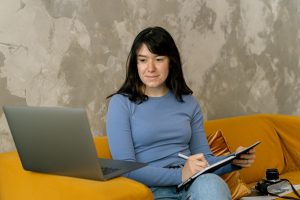How Simplicity Leads to Greater Creativity
Jessica White August 7, 2025
In a world overloaded with information, productivity hacks, and digital noise, simplicity leads to greater creativity—and this isn’t just a minimalist ideal. From Silicon Valley’s top design teams to creators navigating burnout, an emerging trend is reshaping the way we think about innovation: doing less to create more. Simplifying your environment, schedule, and tools can reduce cognitive load, boost focus, and free mental space for better ideas. As creative blocks become more common in an age of constant stimulation, simplicity is not only refreshing—it’s strategic.

Why Simplicity Works for the Creative Mind
The human brain is limited in how much information it can process. According to a 2023 study published in Nature Reviews Neuroscience, too much sensory input can decrease the brain’s ability to make creative connections because it becomes overloaded with irrelevant details1. Simplicity helps by clearing space—mentally and physically—allowing ideas to breathe.
Key points:
- Reduced cognitive load: A clutter-free space or schedule helps the brain focus on a single task.
- Improved problem-solving: Simplicity removes distractions, increasing the brain’s ability to connect unrelated ideas.
- Better mental health: A less chaotic environment contributes to lower anxiety and mental fatigue, both of which directly impact creativity.
Minimalist Workflows Are Gaining Momentum
Professionals are cutting back on complex systems and reverting to analog methods like pen and paper or simple digital tools like Notion, Obsidian, and Apple Notes. In fact, a 2024 trend report by Adobe revealed that 61% of creatives felt more productive using fewer digital tools in their workflow2.
This shift isn’t about rejecting technology—it’s about intentionally choosing tools that get out of the way. Instead of bouncing between five platforms, many creators are consolidating their processes to avoid tool fatigue.
How to Simplify Your Life to Spark Better Ideas
Here’s a practical breakdown for those who want to apply the principle that simplicity leads to greater creativity in their everyday life:
1. Declutter Your Creative Space
- Remove visual distractions like unused tools, outdated notes, or decorative clutter.
- Keep only what’s necessary and inspirational on your desk.
- Consider “zoning” areas: one space for deep work, another for brainstorming.
2. Limit Your Inputs
- Reduce content consumption: choose 1–2 sources of news or inspiration.
- Practice digital minimalism: unfollow distracting accounts, mute non-essential notifications.
- Schedule “no-input” times during your day—no music, no videos, no podcasts.
3. Time Block for Unstructured Thinking
- Creativity often happens in the in-between moments—schedule white space in your calendar.
- Try the 90/30 method: 90 minutes of focused work, followed by 30 minutes of rest or wandering thought.
4. Use One Creative Tool at a Time
- Instead of juggling 10 browser tabs and 3 apps, stick to one tool until a task is complete.
- Choose a tool that simplifies rather than adds complexity—like a single note-taking app or physical notebook.
5. Design Simple Routines That Spark Flow
- Morning or evening routines don’t need to be long—just consistent.
- A 10-minute journaling habit, a walk without headphones, or a screen-free morning can foster idea generation.
Simplicity and Innovation: Case Studies
Apple and Design Clarity
Apple’s product designs reflect simplicity not just aesthetically but functionally. Their streamlined user interfaces, limited product options, and minimalist packaging have set a creative standard. Former Chief Design Officer Jony Ive stated that their goal was always to “get rid of everything that was not essential.” This approach continues to inspire modern product development and UX/UI design.
Author Cal Newport’s Deep Work
In his bestselling book Deep Work, Newport advocates for focused, distraction-free work periods to enhance cognitive performance and creative output. He practices digital minimalism and encourages creatives to reclaim time from fragmented attention.
Studio Neat’s Philosophy
Design studio Studio Neat famously limits the number of projects they work on at once. This constraint fosters higher-quality output and reduces burnout. Their method? A strict “one project at a time” rule that ensures focus and refinement.
The Cultural Shift Toward Intentional Living
Minimalism as a lifestyle isn’t new, but its connection to creativity has gained new relevance post-pandemic. As more individuals seek to escape burnout culture, simplicity is emerging as a counterforce to “hustle” mentality. From slow living communities to digital decluttering challenges, the emphasis is shifting from doing more to doing what matters most.
Even in professional settings, companies are exploring 4-day workweeks, asynchronous communication, and task prioritization—all aiming to simplify workflows while enhancing performance.
Simplicity Is Not Laziness—It’s a Creative Strategy
Choosing simplicity in a productivity-obsessed world might seem counterintuitive, but it’s increasingly backed by research and results. Whether you’re an entrepreneur, artist, strategist, or student, paring back your environment, commitments, and tools can lead to deeper focus and better outcomes.
So if you’ve been feeling stuck, overwhelmed, or uninspired, consider this: maybe it’s not that you need more resources or inspiration—maybe you need less
Final Thoughts
In a culture that equates busyness with success, it can be radical to simplify. But if your goal is to be more creative, effective, and fulfilled in your work, then embracing simplicity might be one of the most impactful changes you can make. Not only does simplicity lead to greater creativity, it allows for more meaning, better decision-making, and a clearer sense of direction.
Simplicity isn’t about doing less for the sake of it—it’s about making room for what truly matters. When distractions are minimized and priorities are clear, creativity isn’t forced; it flows. Whether you’re brainstorming a new project, solving a complex problem, or designing your ideal routine, a simpler approach can often lead to more innovative outcomes.
As the trend toward mindful productivity and intentional living continues, those who know how to clear space—for thought, for rest, for originality—will lead the way. Start small. Choose one thing to simplify today, and let that create space for your next great idea.
References
- Chun, M. M., Golomb, J. D., & Turk-Browne, N. B. (2023). Visual Working Memory and Attention. Nature Reviews Neuroscience. Available at: https://www.nature.com (Accessed: 7 August 2025).
- Adobe. (2024). State of Creativity Report. Available at: https://www.adobe.com
(Accessed: 7 August 2025). - Newport, C. (2016). Deep Work: Rules for Focused Success in a Distracted World. Grand Central Publishing. Available at: https://www.calnewport.com (Accessed: 7 August 2025).







